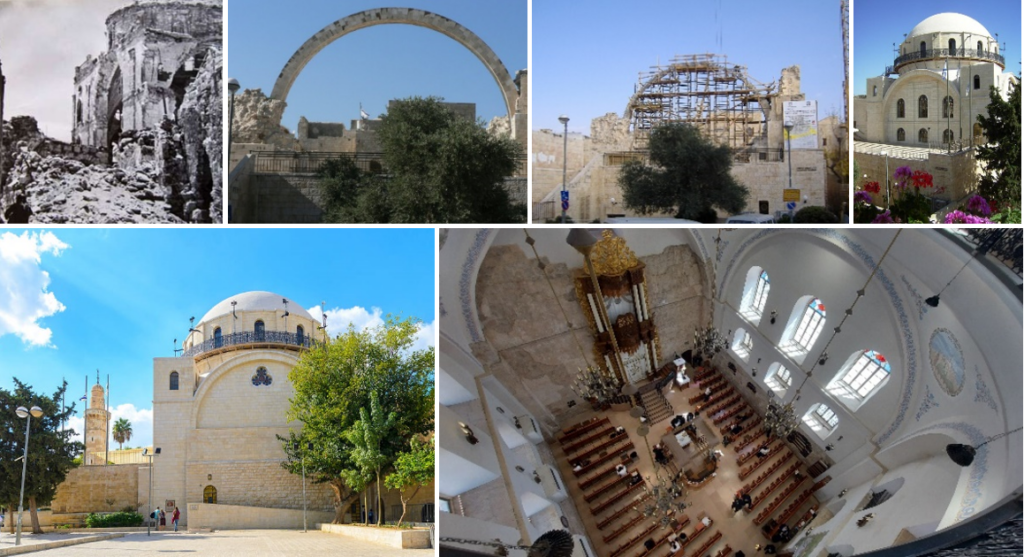
Sabbath ‘Hol HaMoed Pesach (Exodus 33:12-34:26), Maftir (Numbers 28:19-25), Haftarah (Ezekiel 37:1-14)
Reading the Torah during ‘Hol HaMoed Pesach reveals that The Lord, in His great mercy, forgives Israel for its transgressions and renews its covenant. The Maftir provides the ritual directives for the Feast of Matzot.
Ezekiel 37:1-12
.הִנֵּה אֲנִי פֹתֵחַ אֶת-קִבְרוֹתֵיכֶם וְהַעֲלֵיתִי אֶתְכֶם מִקִּבְרוֹתֵיכֶם, עַמִּי; וְהֵבֵאתִי אֶתְכֶם, אֶל-אַדְמַת יִשְׂרָאֵל […]
[…] Behold, I will open your graves and raise you from your graves, O my people. And I will bring you into the land of Israel.”
In the Haftarah, Ezekiel, a prophet exiled to Babylon, has the vision of the valley of dry bones. In tractate Sanhedrin 72b of the Talmud, the sages interpret this vision as announcing the resurrection of the dead at the advent of the messianic era. This prophecy proclaims the return of the entire Jewish people to the land of Israel.
The Hurva Synagogue (חורבה – ruin), located in the Jewish quarter of the Old City of Jerusalem, Israel, has a tumultuous history. A tradition traces its existence back to the time of Rabbi Yehuda HaNassi in the 2nd century. Over the centuries, it has been destroyed and rebuilt several times. Its last destruction dates back to 1948, during Israel’s War of Independence, when the Jewish quarter of Jerusalem fell into the hands of the Jordanians. Its destruction was carried out by soldiers of the Hashemite kingdom, who dynamited the building, reducing it to dust. It was rebuilt between 2005 and 2010, in its original 19th-century style. Today, it stands in a square at the center of the Jewish quarter of Jerusalem.